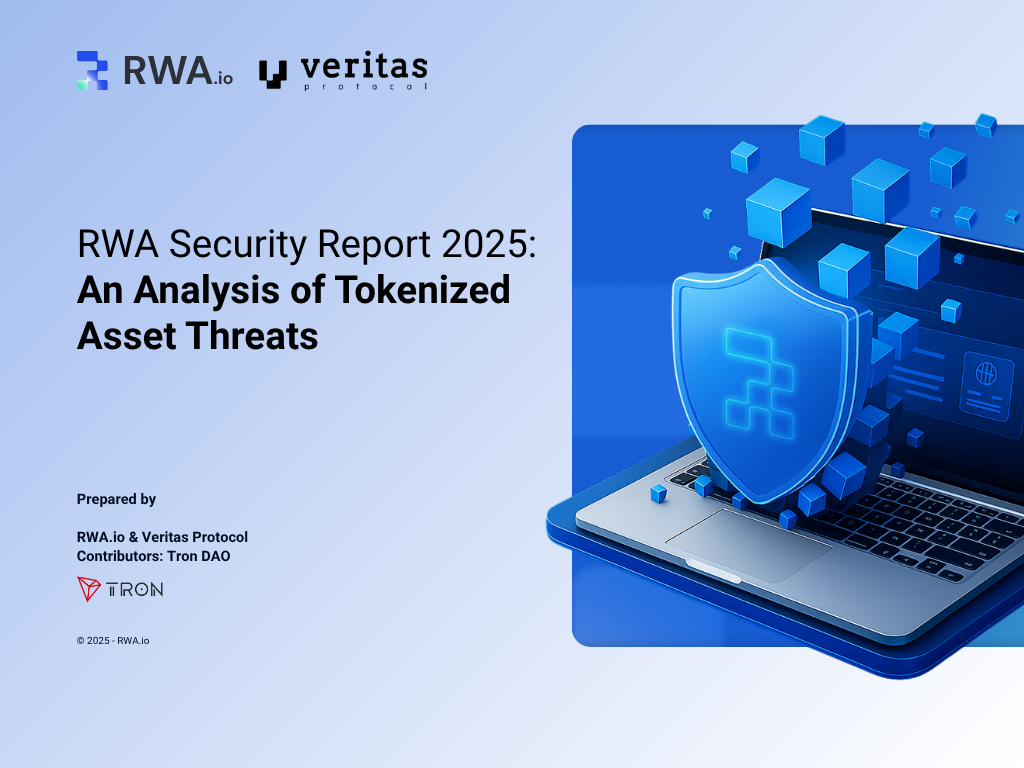[ newsletter ]
Stay ahead of Web3 threats—subscribe to our newsletter for the latest in blockchain security insights and updates.
Thank you! Your submission has been received!
Oops! Something went wrong. Please try again.
Explore effective airdrop farmer detection methods, heuristics, and advanced filters to safeguard your DeFi campaigns and ensure fair distribution.





Airdrop farming, basically using multiple fake accounts to grab free tokens, is a big headache for crypto projects. It messes with fair distribution and can really hurt a project's growth. Figuring out who's a real user and who's just a bot trying to game the system is super important. This article talks about how projects are trying to spot these 'airdrop farmers' and keep their events honest.
Airdrop farming, while a clever way to get free tokens, has become a real headache for many crypto projects. It's basically when someone uses a bunch of fake wallets, often called 'Sybil attacks', to grab more than their fair share of airdropped tokens. This isn't just about a few extra coins; it can really mess with how tokens are distributed and who actually gets to have a say in a project's future.
It feels like just yesterday that airdrops were a simple way to get new projects in front of people. Now, it's a whole different ballgame. Attackers have gotten super sophisticated, using automated tools to create thousands of wallets that all look like they belong to different people. They're not just after airdrops anymore; they're also trying to manipulate governance votes or just generally mess with the ecosystem. It's a constant cat-and-mouse game, with projects trying to figure out who's a real user and who's just a bot farm.
Sybil attacks are a big deal in decentralized finance (DeFi). When one person controls a ton of wallets, they can really skew things. Imagine a project trying to get community feedback, but most of the 'votes' come from a single attacker. That's not a real community decision, right? It also messes with token distribution, meaning genuine users might get way less than they should. Projects like Arbitrum and zkSync have already seen huge chunks of their airdrops go to these farming operations, which really hurts trust and can even tank a token's value right after launch. It's a serious threat to the whole idea of fair distribution and decentralized control.
Figuring out who's farming and who's a real user is tough. These attackers are smart. They spread their activity out, use different transaction patterns, and try to look as normal as possible. It's not like you can just look at a wallet and say, 'Yep, that's a farmer!' You have to dig into the data, look for weird connections between wallets, and spot patterns that just don't make sense for a regular person. For example, seeing dozens of wallets all interacting with the same smart contract within minutes of each other, funded by the same source, is a pretty big red flag. But even then, they can adapt. The sheer volume of on-chain data makes it hard to sift through and find these subtle signs of manipulation. It's a constant challenge to keep up with their evolving tactics.
Here's a look at some common farming patterns:
Detecting these patterns requires sophisticated tools that can analyze vast amounts of blockchain data. It's not something you can easily do by just looking at a few transactions. You need systems that can spot the subtle connections and anomalies that point to coordinated, inauthentic behavior, like the kind of analysis done by tools that monitor EVM chains.
It's a complex problem, but understanding these basic challenges is the first step toward building better defenses against airdrop farmers and keeping DeFi ecosystems fair for everyone.
Looking at blockchain data is like being a detective, but instead of fingerprints, you're looking for patterns in transactions. When we talk about airdrop farming, we're really trying to spot groups of wallets that are acting too much alike, too quickly, to grab free tokens unfairly. The core idea is that real users tend to behave differently than automated farming bots.
This is where we dig into the nitty-gritty of how money moves around. Airdrop farmers often use very similar, repetitive actions across many wallets. Think about it: if you're trying to farm an airdrop with 100 wallets, you're probably going to do the exact same thing with each one, just changing the wallet address. We look for things like:
For example, a common pattern might look like this:
This kind of structured, rapid movement of funds is a big red flag. It's not how a typical user would interact with a protocol.
Beyond just moving tokens, farmers interact with smart contracts in specific ways. We analyze which contracts are being interacted with and how. Are a bunch of wallets calling the exact same functions on the same contracts in a very short period? That's suspicious.
approve and then swap on a decentralized exchange.Identifying these interaction signatures helps us build a profile of automated behavior. Legitimate users might explore different features or use varying parameters based on their individual needs and strategies, whereas farmers often stick to a pre-defined script.
This is where we connect the dots. We group wallets that show similar on-chain behavior. If Wallet A acts like Wallet B, and Wallet B acts like Wallet C, and they all received funds from a similar source or interacted with the same set of contracts, they likely belong to the same farming operation.
Tools like Sybil Defender analyze millions of transactions to identify these clusters. For example, during one evaluation on Arbitrum, they identified 211 Sybil clusters involving over 7,700 wallets. This kind of large-scale analysis is key to uncovering sophisticated farming networks that might otherwise go unnoticed.

Alright, so you've got your airdrop campaign ready to go, but how do you make sure the people getting the tokens are the ones you actually want to reward? It's not always as simple as just looking at wallet addresses. Airdrop farmers, the folks trying to game the system, can be pretty sneaky. They use all sorts of tricks to make one person look like many. That's where heuristics come in – they're like smart guesses or rules of thumb that help us spot this kind of inauthentic behavior.
When we look at how wallets interact with a blockchain, we can start to see patterns. Farmers often move money in very specific, sometimes robotic ways. Think about it: if you were trying to create a hundred fake accounts, you'd probably do the same thing over and over. We can look for things like:
Spotting these patterns isn't about catching every single person. It's about identifying clusters of activity that are statistically improbable for organic user behavior. The goal is to filter out the noise and focus on genuine engagement.
Sometimes, it's not just one wallet acting weirdly, but a whole group of them. These are often controlled by the same person or entity. We need ways to group these wallets together and see if they're acting in concert. This is where wallet clustering comes into play.
Beyond individual wallet behavior and coordination, there are broader patterns that signal airdrop farming. These are often specific to how airdrops are designed and claimed.
By combining these heuristics, we can build a more robust system for identifying and filtering out airdrop farmers, ensuring that rewards go to the community members who are genuinely participating and contributing.

So, we've talked about spotting suspicious activity, but how do we really nail down those airdrop farmers and bots? It's not just about looking at individual transactions anymore. We need to get smarter, using more sophisticated methods to filter out the noise and focus on genuine users. This is where advanced filtering comes into play, layering on top of our initial analysis to catch what might otherwise slip through the cracks.
Think about how we trust people in the real world. We often rely on who we know, or who they know. Social graphs in the blockchain space work similarly. By mapping out connections between wallets – who sent what to whom, and when – we can start to build a picture of relationships. If a bunch of wallets suddenly appear, all interacting in the exact same way with a new project, and they're all connected to a known 'bad actor' wallet, that's a big red flag. Reputation systems build on this. Wallets that have a history of positive interactions, maybe participating in other legitimate campaigns or holding certain tokens, gain a sort of trust score. Conversely, wallets with a history of Sybil-like behavior or known scam interactions will have a low reputation, making them easy to filter out. It’s like a digital vouching system.
This is where things get a bit more involved, moving beyond just on-chain data. Proof-of-Personhood (PoP) aims to verify that a wallet is controlled by a unique human, not a bot or a farm. There are a few ways this is being explored. Some methods involve social verification, where existing trusted users vouch for new ones. Others might use biometric data or even simple challenges that are easy for humans but hard for bots. While full-blown identity verification like KYC (Know Your Customer) is often avoided in crypto for privacy reasons, PoP offers a middle ground. It helps ensure that when you're running a campaign, you're actually reaching real people, not just a thousand wallets controlled by one person. This is especially important for projects that want to build a genuine community, not just inflate their user numbers. For instance, systems are being developed to help projects launch Sybil-resistant forms and surveys, ensuring only legitimate users participate.
Token-gating is a pretty neat trick for keeping campaigns clean. Basically, it means you need to hold a specific token, NFT, or some other digital credential to even participate in an airdrop or a special event. This immediately raises the bar for farmers. Instead of just creating a bunch of wallets, they now have to acquire and hold specific assets for each wallet, which costs money and effort. This makes it much more expensive and difficult for them to scale their operations. Imagine trying to farm an airdrop where you need to hold a rare NFT in every single one of your thousands of wallets – it just doesn't add up economically. This method helps ensure that the people engaging with your project are genuinely interested and invested, not just looking for a quick buck. It’s a proactive way to maintain campaign integrity and reward actual community members. We're seeing this used to make it costly for Sybils to scale their activities.
Airdrops are a popular way to get new users and reward early supporters, but they're also a big target for Sybil attackers. These attackers create tons of fake wallets to grab a disproportionate amount of the rewards, which isn't fair to real users and can mess up the project's token distribution. It's like a bunch of bots showing up to a party and eating all the snacks before anyone else gets a chance.
To fight back against this, projects need to build airdrops with defense in mind from the start. It's not just about handing out tokens; it's about making sure those tokens go to actual people who care about the project.
The core idea is to make it more costly and difficult for attackers to create and manage a large number of fake identities compared to genuine users. This shifts the balance, making legitimate participation more attractive and feasible.
Instead of a one-off airdrop, think about rewarding users over time. This encourages people to stick around and contribute to the project, rather than just farming for quick rewards and leaving.
Your community can be your strongest defense. When people are invested in the project, they're more likely to spot and report suspicious activity.
So, you've built a system to catch those pesky airdrop farmers. That's great! But how do you know if it's actually any good? We need ways to measure how well it's doing its job. Think of it like grading a test – you need to know if the answers are right or wrong.
We look at a few key numbers. True Positives (TP) are the farmers your system correctly identified. Nice work! Then there are False Negatives (FN), which are the farmers who slipped through the cracks. Oops. On the flip side, False Positives (FP) are when your system flags a regular, honest user as a farmer. That's not good either, as it can annoy real people.
Here's a quick rundown of some common metrics:
Here’s a look at how a hypothetical system might perform:
Now, about those numbers. You can't just look at them in a vacuum. You have to decide what's 'good enough' for your specific needs. This is where thresholds come in. Think of a threshold like a minimum score needed to pass a class.
For example, if your system flags a wallet as a potential farmer, it might give it a 'risk score'. You then set a threshold – say, 0.7. Any wallet with a score above 0.7 gets flagged. But what if you set that threshold too low? You might catch a lot of farmers, but you'll also catch a lot of normal users (high FP). If you set it too high, you might miss a bunch of farmers (high FN).
Choosing the right threshold is a balancing act. It depends on whether you're more worried about missing actual farmers or about inconveniencing legitimate users. Sometimes, a slightly higher false positive rate is acceptable if it means you catch almost all the farmers. Other times, you might prioritize not bothering real users, even if it means a few farmers get away.
It's not a one-size-fits-all situation. You might need to tweak these thresholds based on the specific airdrop campaign and your project's tolerance for risk.
Look, the world of crypto moves fast, and so do the farmers. They're always coming up with new tricks to get around detection systems. So, your detection model can't just sit still. It needs to keep learning and adapting.
This means:
It's an ongoing process. Building a good detection system isn't a one-time thing; it's a commitment to staying ahead of the curve.
So, we've gone through a bunch of ways to spot those pesky airdrop farmers. It's not always straightforward, and attackers are always trying new tricks. But by using a mix of smart filters and looking at patterns, we can get pretty good at telling the difference between a real user and someone just trying to game the system. The key is to keep an eye on what's happening and be ready to adjust our methods. It’s a bit like playing whack-a-mole, but with the right tools and a bit of know-how, we can definitely make it harder for them and keep things fairer for everyone else.
Airdrop farming is when someone uses many fake online accounts, like fake email addresses but for crypto wallets, to try and get free tokens from a project's airdrop. It's a problem because it's not fair to real users who engage with the project. It also means the project's tokens end up in the hands of people who might just sell them immediately, which can hurt the project's value and community.
We look at the 'footprints' left on the blockchain. This includes checking if many wallets act in the same way, like sending tiny amounts of crypto to each other or interacting with the same smart contracts at the exact same times. It's like seeing a group of people all wearing the same unusual hat – it suggests they might be connected.
Heuristics are like educated guesses or rules of thumb based on common patterns. For example, a heuristic might be: 'If over 50 wallets were created in the last hour and all interacted with the same new project within 5 minutes, they might be farmers.' These aren't perfect, but they help us flag suspicious activity for closer inspection.
It's very hard to stop it completely, but projects can make it much harder. They can use things like 'token-gating,' where you need to own a specific token or NFT to claim an airdrop. They can also look at how long someone has been active in the ecosystem, not just if they connected a wallet once. It’s about making it too expensive or difficult for farmers to create and manage thousands of fake wallets.
A Sybil attack is when one person or group creates many fake identities (like fake wallet addresses) to gain an unfair advantage. In airdrops, they use these fake wallets to claim more than their fair share of tokens. In voting systems, they can use these fake identities to sway decisions unfairly.
Advanced filters go beyond simple patterns. They might use social connections (like who follows whom online), look at a wallet's history of activity over a long time, or even use 'proof-of-personhood' systems that try to verify that a wallet belongs to a unique human. These methods are more complex and harder for farmers to fake.


